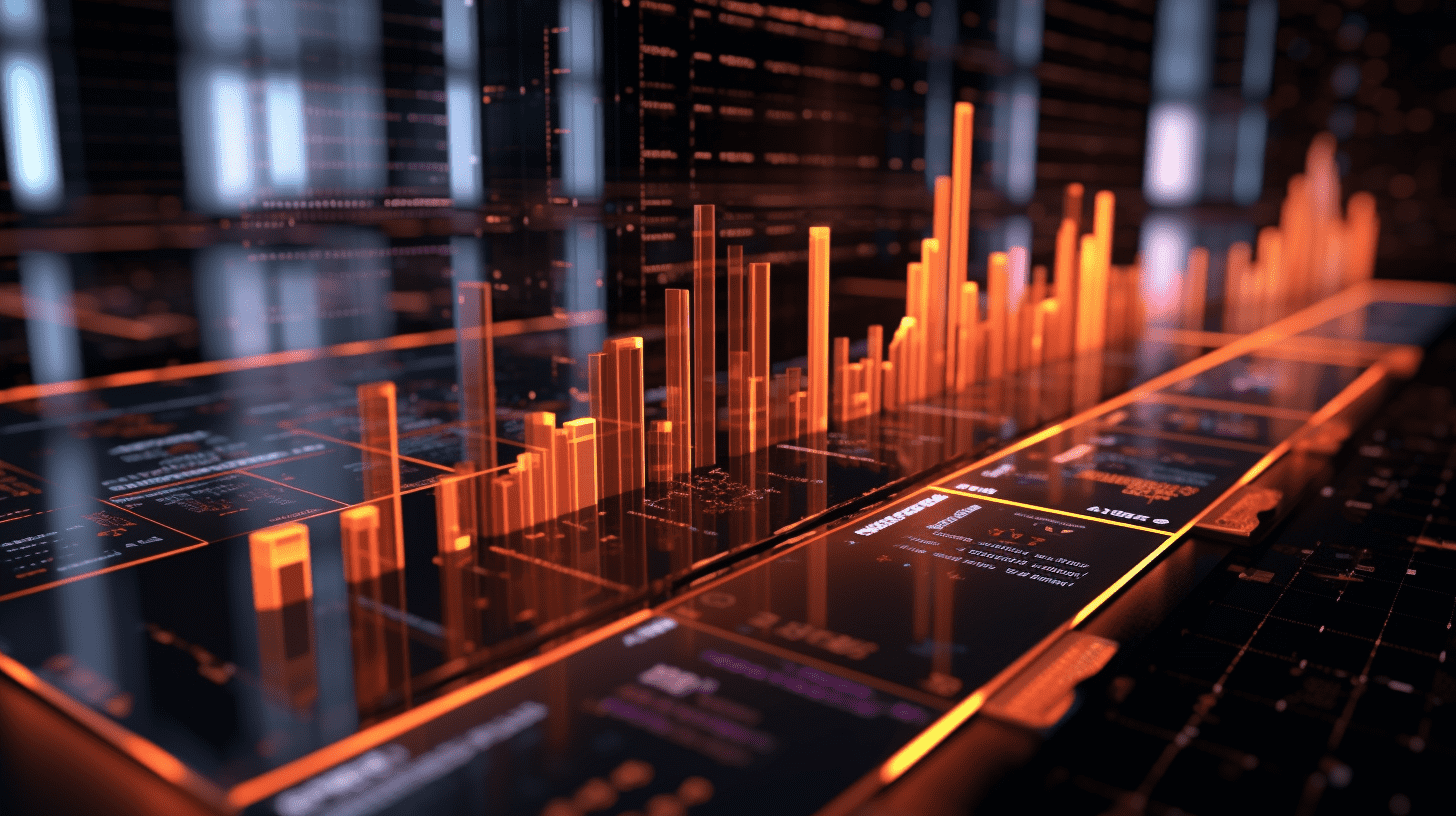When the credit market begins to be cautious, is the stock market frenzy led by the "golden haired girl" expected to face liquidation?
The corporate credit spread is nearing its lowest level in 27 years, and some investment institutions have expressed concern that this asset class is not adequately pricing in the risk of a recession. The credit market often leads to some cross-market level pullbacks.
Some survey data and institutional position statistics show that some Wall Street investment institutions are exiting or actively shorting high-priced corporate credit assets. They anticipate that the extremely weak non-farm data released on August 1 will highlight a trend of slowing US economic growth, leading to a significant correction in the global corporate credit market, which could ultimately have a significant impact on the pricing trends of global stock markets, causing the stock market to enter a downward adjustment curve.
Current statistical data shows that corporate credit spreads are close to their lowest levels in 27 years, indicating that long-favored assets such as corporate credit (i.e. corporate bonds) are least compensated and most expensive for "economic recession risks". However, reaching such extreme pricing levels often results in the inevitable decline of credit assets through a process of "mean reversion", leading to a new cycle of downturn for corporate bond assets.
In other words, the majority of institutional investors believe that current corporate bonds are too tight in spreads/low in yields and do not adequately price in the risks of potential recession and losses; once growth slows or a recession looms, credit prices are most likely to fall first, affecting risk assets such as stocks. For the stock market, the more negative pricing trend is that, with credit spreads reaching historic highs and the weak non-farm data driving even weaker pricing for the US economy, bearish sentiment is gradually growing. Recent signs indicate that the credit market is gradually pricing in expectations of economic slowdown or recession.
The so-called credit market (also referred to as the corporate credit market) consists of corporate bonds as the main market component, covering various debt securities and loans, including corporate bonds. Market research data shows that the spread between corporate bonds and government bonds, the main valuation indicator of the credit market, dropped to just 1 basis point above the historic low reached in 1998 on July 29.
In interviews with investors and client research reports, global asset management companies and some of the world's largest investment banks warn that the current pricing of credit assets has already reached a level consistent with stronger economic growth prospects expected by official forecasters this year.
If the slight correction in the MSCI Global Stock Market Index since August suggests that investors still firmly believe in positive trends in economic growth, then the stock market and the corporate credit market are still pricing in the optimistic macroeconomic expectation of "Goldilocks Economy"an economy that is not too hot, not too cold, just right, maintaining moderate growth and low inflation.
"For developed market credit assets, we have shifted to a very defensive stance," said Mike
Ridell, Chief Investment Officer of Strategic Bond Strategies at global asset management giant Fidelity
International. "Our exposure to cash bonds is nearly zero, and we are short high-yield bonds," he added. Here, 'short' refers to using derivatives to bet that a certain asset class will perform poorly in the future.
As the credit market shifts towards a weaker trend, will the stock market also enter a corrective trajectory?
At a time when the credit market is severely underpricing the potential slowdown in economic growth, global markets are rallying. European stock markets recorded their largest single-week gains since late April, and the S&P 500 Index and Nasdaq 100 Index in the US are close to historic highs. However, investors and analysts point out that the corporate credit market is the most obvious example of market exuberance, with its exuberance far exceeding that of global stock markets.
As US economic data may begin to weaken, some Wall Street institutional investors suggest that the corporate credit market is often most vulnerable to the sustained slowdown of the world's largest economies, which could severely depress global economic growth expectations, leading to a subsequent decline in the stock market.
On Friday, investment-grade bond spreads narrowed to around 78 basis points, hitting their tightest level since mid-November last year, and just 1 basis point above the lowest level of 77 basis points reached in 1998.
According to Nikolaos
Panigirtzoglou, a market strategist at Wall Street giant J.P. Morgan, "Over the past few years, there have been several instances of divergence between the credit market and the stock market, and the results have shown that the credit market was the right one."
Matt
Maley, Chief Market Strategist at Miller Tabak + Co., said, "Many investors may not realize that, in the backdrop of expensive stock market valuations, a decline in long-term yields is actually negative for stocks. When there is divergence in the trend between the stock market and the credit market, the credit market is almost always the one making the correct judgement in terms of the economy."
The credit market often leads the way
Before the global market downturn caused by the US-China trade war in 2018, the market crash triggered by the Fed's aggressive rate hikes in 2022, and the similar scale market turbulence at the end of 2023, popular exchange-traded funds (ETFs) tracking high-rated corporate credit assets had already declined before global stock markets entered a downturn.
Charts compiled by institutions show that from the global financial crisis to the market sell-offs at the end of 2023, passive funds (credit asset ETFs) tracking corporate credit assets primarily fell before the stock market.
Stuart Kaiser, Head of US Equity Options Strategy at Wall Street financial giant Citigroup, said that in recent weeks, their derivatives trading desk has seen significant demand from global asset management clients for financial products that bet on the underperformance of indices like iShares or junk bonds in the future.
"This is likely macro-oriented institutional investors taking directional strategy views, or adding hedges to the rally we've seen in risk assets," Kaiser said. "Some institutional investors are now hedging credit risk, indicating through hedging credit risks that they believe there is significant downside potential in global stock markets over the next three months."
Florian Yeurl, Head of Multi-Asset at Lombard Odier Asset Management, stated that based on the changes he observed in the market significantly below pricing, credit assets are still "leading the market." According to his own analysis of global credit indices, he emphasized that the proportion of corporate bonds with narrowing credit spreads in the five days ending August 4 suddenly dropped from 80% to 60%.
"This is a significant change in the data, not to be overlooked," Yeurl stated, as this is not common. He added that he has just reduced a bullish position on credit derivatives trading that he had previously held.
Guy Steil, Developed Markets Strategy Director at Amundi Investment Institute, said that high-yield bondsissued by companies in economically crucial industriesare the most likely to experience a correction, with the stock market potentially following suit.
He predicted that as early as October, the refinancing costs and defaults of high-yield bonds could suddenly skyrocket due to rising costs related to Trump administration tariffs or cash flow pressures, triggering concerns about employment, investment, and economic growth. "When the credit market is under pressure, the stock market will eventually be under pressure," he stressed.
The yield premium that US junk-rated borrowers pay to bondholders relative to investment-grade companies has fallen to just around 2.8%, hitting a new low since 2020. This data indicates that high-yield bonds (the weakest credit bonds) are now offering investors very thin risk compensation. Should global economic growth expectations weaken again or default rates rise, the market's return to normalcy could see a "jumping" decline, with high-yield bond prices collectively plummeting.
There still exists an excessively optimistic investment sentiment in the market: pricing for growth rather than pricing for recession
Matthew
Mish, a market strategist at UBS, stated in a report to clients that overall, the current credit spreads imply global growth forecasts of close to 5%, which is much higher than the current levels of economic growth expected by official forecasters. The International Monetary Fund expects global economic growth to be around 3% this year.
"The investment-grade market is pricing in a positive macro scenario of 'Goldilocks Economy'," said Van
Luu, Global Head of Fixed Income and Currency Strategy at Russell Investments. He added that he believed this expectation was inaccurate, which is why he adopted a negative stance of "underweight" on the credit market.
The International Monetary Fund believes there is a 40% probability of the US entering an economic recession, and if the weakening trends in growth expectations that drive export-oriented economies are reversed, the risks for other major global economies would suddenly rise.
In a report to clients this week, UBS's Mish said, "Many risk assets are pricing in economic growth prospects that are higher and more optimistic than we expect. However, the credit market is an exception."
Related Articles

The candidate pool for the Federal Reserve chair has expanded from 4 to 11, covering the White House, the Fed, and Wall Street.

Following Trump's reform stance, Republican lawmakers submit a bill to untie federal regulation of marijuana.

Corporate hoarding of coins triggers explosion in cryptocurrency market, with Bitcoin and Ethereum approaching historical peak values.
The candidate pool for the Federal Reserve chair has expanded from 4 to 11, covering the White House, the Fed, and Wall Street.

Following Trump's reform stance, Republican lawmakers submit a bill to untie federal regulation of marijuana.

Corporate hoarding of coins triggers explosion in cryptocurrency market, with Bitcoin and Ethereum approaching historical peak values.

RECOMMEND

Hong Kong Stock Concepts | Boosting Consumption: Dual Interest Subsidy Programs Implemented to Benefit Key Sectors
13/08/2025

Countdown to Evergrande’s Delisting: HK$350 Billion in Liabilities, Only HK$2 Billion Recovered
13/08/2025

U.S. July Tariff Receipts Reach Record High, Yet Budget Deficit Continues to Grow
13/08/2025


